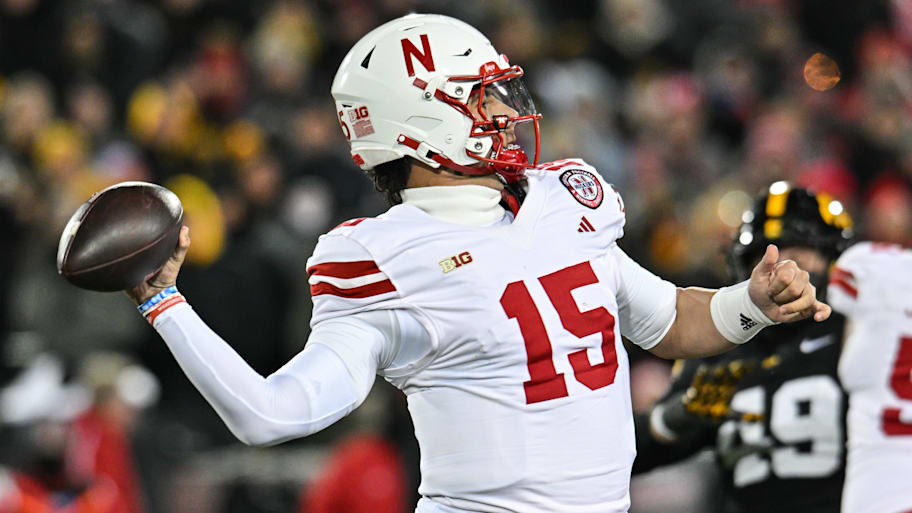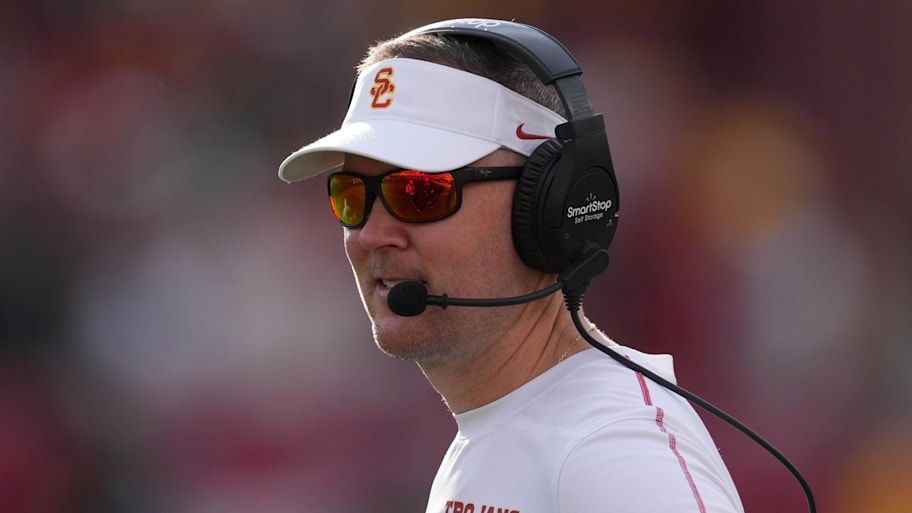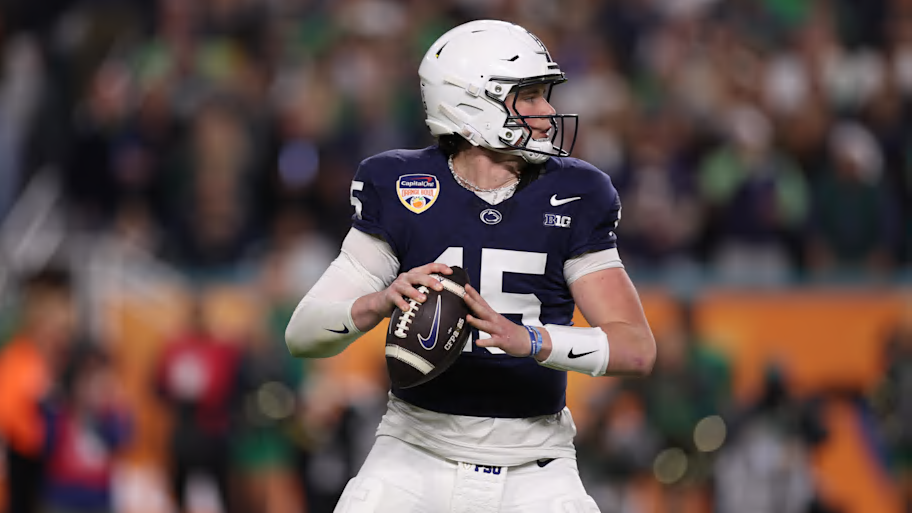College football crossed the offseason Rubicon over the weekend as we’re now closer to kickoff in Week Zero than we are removed from the national title game. As we hit the downslope barrelling toward the upcoming 2025 season—and with most of the transfer portal activity quieted down—it’s time to check in with the major conferences to see just how they’re shaping up coming out of the spring.
You can find the ACC edition here and the Big 12 here. Next up? The Big Ten.
It wasn’t long ago, three years in fact, that the Big Ten was questioning what it had to do to take that next step in its long running battle against the SEC. Entering the 2025 campaign, such questions no longer hover over one of the two marquee brands in the sport and the conference can proudly claim the last two national champions. Things are shaping up for a good shot at a third in a row, perhaps with a third different program. The western wing of schools, despite some initial struggles by three of them, seem to have quickly found a way to fit right in and should all be more competitive with a second spin through the league. The big brand stalwarts remain favorites to make it to Indianapolis for the title game as well.
Plus, given how much sway commissioner Tony Petitti seems to have when it comes to the future of the College Football Playoff, it certainly appears as though the Big Ten is reaching the height of its power and influence on the broader landscape. It’s not a bad place to be and will add another level of importance to the on-field results in what could be yet another fascinating campaign from coast-to-coast in the B1G.
Title favorite: Penn State Nittany Lions
Is this the year James Franklin can get over the hump and win enough big games to convince a skeptical fan base (and larger college football world) that Penn State is for real? We’re about to find out as the excuse making will be limited in 2025 given that the Nittany Lions are as well positioned to win a national title as they perhaps ever have been coming into a season.
There are some similar vibes in State College, Pa., to the past two title winners in that they’re largely following the same game plan: retain the bulk of your premier talent for another season and make a big run after coming up just short the year prior. Quarterback Drew Allar is a senior and has all the tools to take the next step. He’ll benefit from the return of Kaytron Allen and Nicholas Singleton as a two-headed attack that remains one of the best backfields in the country. Wide receiver, a sore spot in recent years, has been upgraded through the transfer portal and a loaded defense will now be coordinated by Jim Knowles, the guy who won it all in Atlanta a few months ago.
If Penn State can’t do it now when it seems like the stars are aligning, you do start to wonder if it ever will be able to again.
Conference tiers
Co-favorites: Ohio State Buckeyes, Oregon Ducks
Dark horses: Illinois Fighting Illini, Nebraska Cornhuskers
Aiming high: Indiana Hoosiers, Iowa Hawkeyes, Michigan Wolverines, USC Trojans
Battling for a bowl: Maryland Terrapins, Michigan State Spartans, Minnesota Golden Gophers, Rutgers Scarlet Knights, UCLA Bruins, Washington Huskies, Wisconsin Badgers
Building for next year: Northwestern Wildcats, Purdue Boilermakers
There’s a pretty decent sized middle class in the Big Ten again which means there should be a ton of toss-up games for most teams. How that ends up could come down to a little fumble luck and catching a break on the schedule from all the cross-country travel but sure seems like there are three teams penciled in as CFP contenders, a solid crop of teams that could wind up in the mix and a pretty hefty group of question marks beyond that.
The Buckeyes unquestionably lost a ton off their roster from the title-winning squad, including a number of key leaders on both sides of the ball, but also have a roster that will consistently put them in the top five of the preseason polls. They’ll be breaking in a new, inexperienced quarterback, but also get the benefit of having two of the best players in college football in wide receiver Jeremiah Smith and safety Caleb Downs. The opener against the Texas Longhorns is tough, but they miss Oregon and host Penn State at the Horseshoe. Ryan Day still has to overcome his issues with Michigan, but nobody would be surprised to see them or the reigning champion Ducks back in Indianapolis for a shot at the league title.
Beyond the early favorites, things get interesting. Illinois returns just about everybody from a 10–3 squad, while Nebraska gets a very favorable schedule and could be one to watch if Dylan Raiola takes the next step. Meanwhile, Curt Cignetti doesn’t believe in Indiana taking a step back after making the CFP, Iowa and Michigan feel like they’ve found some offensive answers and even USC has some positive momentum coming into the season.
Top storyline: Can some middling programs get back on track?
While it may seem like all is well in the Big Ten off the back of two national titles and the richest media deal in college sports, things could be even better if a few programs are able to start winning to a level their fan bases historically expect.
One could probably start in Madison, Wis., where the Badgers missed a bowl for the first time since 2001. Luke Fickell’s ill-advised pivot to the Air Raid offense has been scrapped and a return to more traditional roots will, the hope goes, return the program back to contention within the conference (and nationally). Jonathan Smith, likewise, has a rebuild on his hands at Michigan State and needs some signs of progress after a 5–7 debut left a little more to be desired of the West Coast transplant.
Yet nothing would do more for the reputation of the league more than if Nebraska and USC simply got their act together. Matt Rhule took a good first step with an elusive bowl game in Year 2, but Nebraska still lost more games than it should have and still isn’t close to the level it wants to get to. The Trojans, meanwhile, have been on the wrong trajectory since Lincoln Riley’s arrival and had an unpleasant first season in the league where it looked like they couldn’t handle some of the travel and specialized in snatching a defeat from the jaws of victory in one-score games. Both programs have invested heavily in facilities, coaches, support staff and their rosters. There are few excuses left at this point for any of those middling in the Big Ten and whether those teams can or cannot take the next step and start winning to a level commensurate with their resources will be one of the biggest talking points away from the field this season.

Under-the-radar storyline: Which quarterbacks elevate their teams into CFP contenders?
It’s been rare to say it beyond a handful of teams, but this is a fascinating season for quarterbacks in the Big Ten in so many aspects. You can start with some established stars who are trying to elevate their own games in hopes of taking their team’s play into another rung on the pecking order. Think Illinois’s Luke Altmyer, Michigan State’s Aidan Chiles, Nebraska’s Dylan Raiola, Rutgers’s Athan Kaliakmanis, Washington’s Demond Williams Jr. or USC’s Jayden Maiava. There’s also a collection of fresh faces in new places trying to do the same, be it Nico Iamaleava at UCLA, Mark Gronowski at Iowa, Billy Edwards Jr. at Wisconsin or Fernando Mendoza at Indiana. Finally, there’s a handful of inexperienced signal-callers being handed the reins with expectation of there being little drop-off under center, such as Ohio State youngster Julian Sayin, Oregon’s highly touted Dante Moore or five-star freshman Bryce Underwood with Michigan.
That’s a lot of QBs with a lot of pressure this season and seeing which ones break out in Big Ten play will go a long way in determining the pecking order for the conference standings and which programs will be a part of the CFP selection committee’s weekly debates.
Notable players arriving
Transfers: Tennessee Volunteers QB Nico Iamaleava (UCLA), Nevada Wolf Pack OT Isaiah World (Oregon), Cal Golden Bears QB Fernando Mendoza (Indiana), Arizona Wildcats CB Tacario Davis (Washington), North Carolina Tar Heels edge Beau Atkinson (Ohio State)
Freshmen: Michigan QB Bryce Underwood, Ohio State CB Devin Sanchez, Oregon WR Dakorien Moore, Penn State OT Malachi Goodman, Iowa DL Iose Epenesa
Notable departures
Draft: Penn State edge Abdul Carter, Michigan DT Mason Graham, Penn State TE Tyler Warren, Ohio State WR Emeka Egbuka, Oregon QB Dillon Gabriel, Iowa RB Kaleb Johnson
Transfers: USC WR Duce Robinson (Florida State Seminoles), USC WR Zachariah Branch (Georgia Bulldogs), Nebraska edge Princewill Umanmielen (Ole Miss Rebels), Wisconsin DB Xavier Lucas (Miami Hurricanes), Nebraska DE James Williams (Florida State)
New coaches
There’s just one new addition to head coaches meetings this year: Purdue’s Barry Odom, who surprised some by quickly moving on from the UNLV Rebels after two seasons to take a Big Ten job instead of perhaps looking at what else was on the market this offseason. While his overall 44–33 record isn’t eye-opening by any stretch, Odom gets his teams to punch above their weight rather significantly and did really good work winning at two places (his alma mater Missouri Tigers being the other) where it can be difficult to exceed expectations.
He’s got a massive rebuild on his hands in West Lafayette, Ind., that figures to be a multiyear process, but there’s no denying the Boilermakers will be much improved from being one of the worst Power 4 teams in the country last season.

Coaches on the hot seat
There are a few different categories of coaches on the hot seat in the Big Ten. The most talked-about pair who are feeling the heat from their fan bases likely fall into the realm of “too big of a buyout” in Fickell and Riley. While the former’s is a tad more manageable, it’s still large enough to force Wisconsin to stick it though 2025 to make next season a make-or-break one for a coach who has proven he’s capable of winning big, but so far hasn’t in Madison. An absolutely brutal schedule will be a factor in retaining him, but the bottom line is that it would take a serious bottoming out situation for Badgers athletic director Chris McIntosh to consider passing the hat around to every booster and hitting reset on his biggest hire to date.
The situation at USC is in a bit of a different boat. Riley’s buyout is in Jimbo Fisher territory and the administration has chosen to reinvest in an expensive personnel operation to help the head coach turn things around rather than pinching pennies in anticipation of making a move if results are subpar in L.A. once again. There’s no denying that the fan base is ornery and an administration that didn’t hire the former Oklahoma Sooners coach would like to see some tangible progress after two seasons of disappointment. The amount of one-score losses the Trojans had suggests they could be primed for a turnaround if they can overcome late-game struggles, but that is something that falls squarely on Riley to fix or the conversation around his tenure will start to get very serious in 2026.
Elsewhere in the B1G, there’s always the retirement watch for the longest-tenured FBS coach in Iowa’s Kirk Ferentz and the potential for things to get interesting in College Park, Md., for Mike Locksley if the Terps fail to make a bowl again. The DMV recruiting wizard hasn’t won more than eight games in his second stint in charge of the program and sports just a 32–36 record going into Year 7. There will be a new athletic director in charge this fall which always adds another layer of pressure to the incumbent head coach, but it surely ramps up the heat on Locksley to start to produce more on the field when Indiana can make the CFP in Year 1 under Cignetti and other peer programs can more regularly find some high-water moments.
Likewise, UCLA’s DeShaun Foster and Northwestern’s David Braun could both fall into the worth monitoring category given their modest buyouts at schools who are hoping for more momentum on the gridiron and could have a wealth of better options in the next few years.
The final word
It’s become very apparent that between power, money and on-field performance, there are two true power conferences in the sport in the Big Ten and SEC. While this dynamic is still in its early stages, it’s hard to argue that the former isn’t operating from a position of strength in college football at the moment and is poised to do so again in 2025 with a slew of national title contenders, a robust middle class with a number of breakout candidates and impressive depth that makes every Saturday a must-watch.
The onus is on the conference’s 18 teams to continue to live up to that kind of billing this upcoming season but, at least going into the summer, it appears they’re well positioned to do so. It might be tough to live up to last year’s campaign in terms of the number of elite teams in action, but there’s still quite a bit of fun set to play out from coast-to-coast in a conference that isn’t at all like the one you remember from a few years ago.
More College Football on Sports Illustrated
This article was originally published on www.si.com as Big Ten Football Primer: Penn State Primed for Jump, League in Position of Strength.
